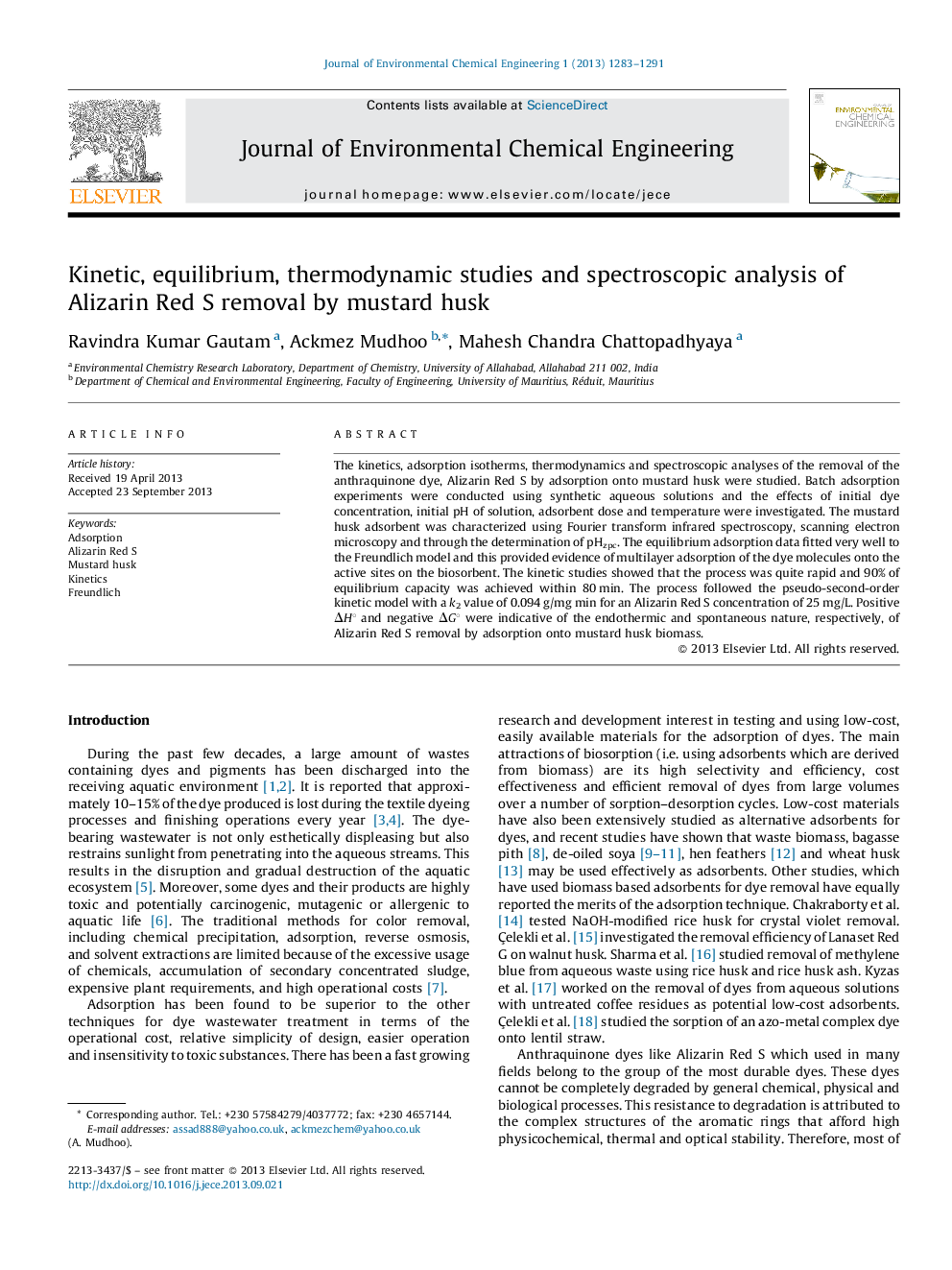| Article ID | Journal | Published Year | Pages | File Type |
|---|---|---|---|---|
| 222532 | Journal of Environmental Chemical Engineering | 2013 | 9 Pages |
The kinetics, adsorption isotherms, thermodynamics and spectroscopic analyses of the removal of the anthraquinone dye, Alizarin Red S by adsorption onto mustard husk were studied. Batch adsorption experiments were conducted using synthetic aqueous solutions and the effects of initial dye concentration, initial pH of solution, adsorbent dose and temperature were investigated. The mustard husk adsorbent was characterized using Fourier transform infrared spectroscopy, scanning electron microscopy and through the determination of pHzpc. The equilibrium adsorption data fitted very well to the Freundlich model and this provided evidence of multilayer adsorption of the dye molecules onto the active sites on the biosorbent. The kinetic studies showed that the process was quite rapid and 90% of equilibrium capacity was achieved within 80 min. The process followed the pseudo-second-order kinetic model with a k2 value of 0.094 g/mg min for an Alizarin Red S concentration of 25 mg/L. Positive ΔH° and negative ΔG° were indicative of the endothermic and spontaneous nature, respectively, of Alizarin Red S removal by adsorption onto mustard husk biomass.
